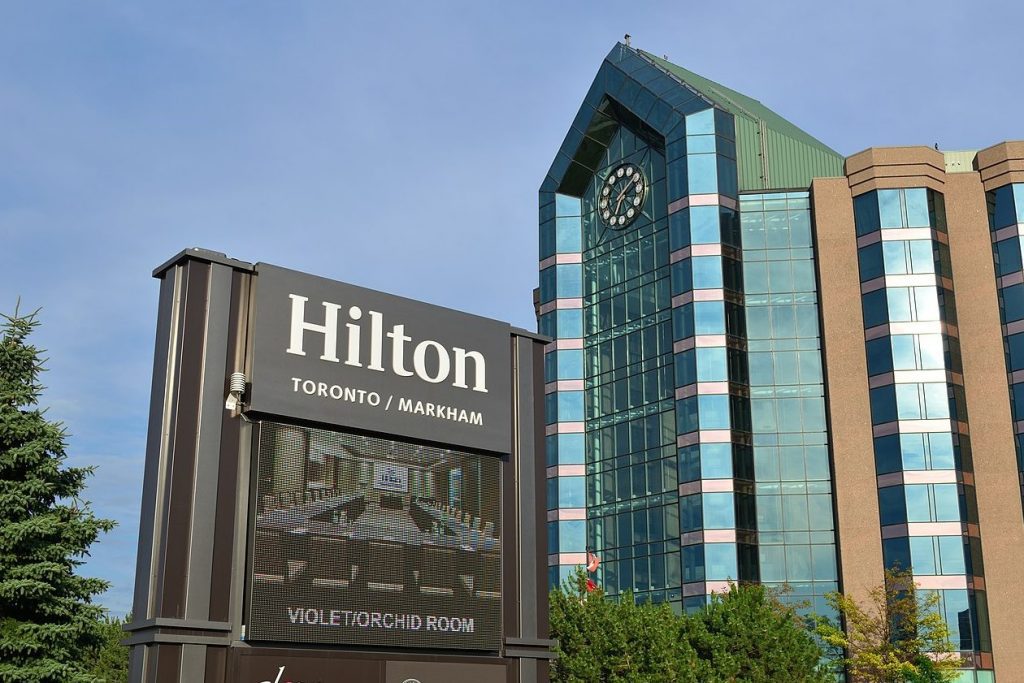Skift Take
Hilton's pandemic recovery plan hinges significantly on companywide cost-cutting and fewer staffers at the property level becoming a permanent way of doing business.
The world’s second largest hotel company stalled at the end of 2020 in its pandemic recovery, but company leaders say they used the crisis as an opportunity to position the business for higher earnings and lower labor costs in the future.
Hilton reported a $720 million loss for the entirety of 2020, with $225 million of that coming from the fourth quarter. That’s a setback for the company, which saw an $81 million loss in the prior quarter and had company leaders believing at the time they were on their way to a breakeven point.
While Hilton leaders recognize the fiscal headwind, they remain confident cost-savings measures instated earlier in the pandemic as well as ongoing labor efficiencies position the company for better gains on the other side of the crisis.
“The positive momentum in demand we saw through the summer and early fall was disrupted in November and December by rising Covid cases, tightening travel restrictions, and further hotel suspensions – particularly in Europe,” Hilton CEO Chris Nassetta said Wednesday on an investor call. “We remain optimistic that accelerating vaccine distribution will lead to easing government restrictions and unlock pent-up travel demand.”
A winter surge of new cases around the world hindered the hospitality industry, especially in markets enacting new rounds of tough lockdowns and travel restrictions like Europe and northern China. “Modest” increases in demand in the U.S. offset some of the stalled recoveries in Europe and the Asia-Pacific region, Nassetta said.
Vaccine distribution is picking up around the world, especially in markets like the U.S. and UK, but Hilton’s optimism on future growth involves more than people getting inoculated.
Hilton significantly cut costs and looked for efficiencies across all brands when travel demand tanked worldwide last March. The company’s general and administrative expenses are down about 30 percent, said Kevin Jacobs, Hilton’s chief financial officer.
“I know it’s sort of an odd time to be pounding the table with optimism, but when we sit around the table, it’s been a hard year but, as a result of it, we’ve put ourselves in the best position because of it,” Nassetta said. “The business is going to be better for it and produce higher margins and free cashflow, which is going to allow us to return even more capital than we were pre-Covid to our shareholders.”
Rising Wages and the Pandemic Recovery
One area where costs have the potential to rise stem around labor, as there is a growing national movement to increase the minimum wage to $15 per hour. Nassetta voiced his support for the wage increase, if done in a multi-year phased approach.
“I think we should all assume the minimum wage is going to be going up over time because it needs to,” he added. “I am hopeful it will be done in a staged way and there will be other mechanisms built into the timing and geographical approach to make it make sense on all sides.”
But Nassetta also noted a rapid increase to the minimum wage had the potential to further impede the hotel industry’s jobs recovery from the pandemic. Hospitality remains a laggard relative to the rest of the economy, and hotel unemployment in January was 23.1 percent compared to the 6.3 percent national average.
Rising wages don’t necessarily mean higher costs to hotel owners, either.
While Hilton has found savings in many areas, some of that came at the expense of labor. Along with laying off roughly 22 percent of its global corporate staff last year, Hilton has also worked to find labor efficiencies in divisions like housekeeping and food and beverage at the property level.
Both Nassetta and Jacobs touted these labor efficiencies at Hilton brands like Tru as ways owners could be well-positioned to afford higher individual wages.
“When we get out of the crisis, those businesses will be higher margin and require less labor than they did pre-Covid,” Nassetta said.
A Return to Normal
Most hotel companies continue to shy away from specific revenue forecasts given the ongoing uncertainty with the pandemic, but Hilton is optimistic over the second half of 2021. The rate of vaccine distribution in the U.S. is picking up where it could be possible to see significantly relaxed travel restrictions in a matter of months.
“The trend line there will be quite good when you get the all-clear sign, which hopefully will be by spring and no later than summer,” Nassetta said.
Before China’s flare-up of new cases, Hilton’s portfolio there was running only about 10 percent shy of pre-pandemic performance levels, he added. The higher personal savings rate in the U.S. during the crisis also gives the company reason to expect an explosion of pent-up leisure travel once more people get vaccinated this year.
Hilton’s group bookings inquiries were up 35 percent in January from the fourth quarter, and the company — like most of its competitors — sees a generally robust calendar of group reservations in the latter part of this year. The strong interest even has Nassetta cautioning employees to not heavily discount event space in 2022, as he expects overwhelming demand.
“I think there’s a great opportunity for the second half of the year to be better than any of us think,” he added.
Have a confidential tip for Skift? Get in touch
Tags: coronavirus, coronavirus recovery, hilton
Photo credit: Hilton posted a massive loss for 2020, but its banking a major pandemic recovery on cost and job cuts. Raysonho @ Open Grid Scheduler / Grid Engine / Wikimedia
